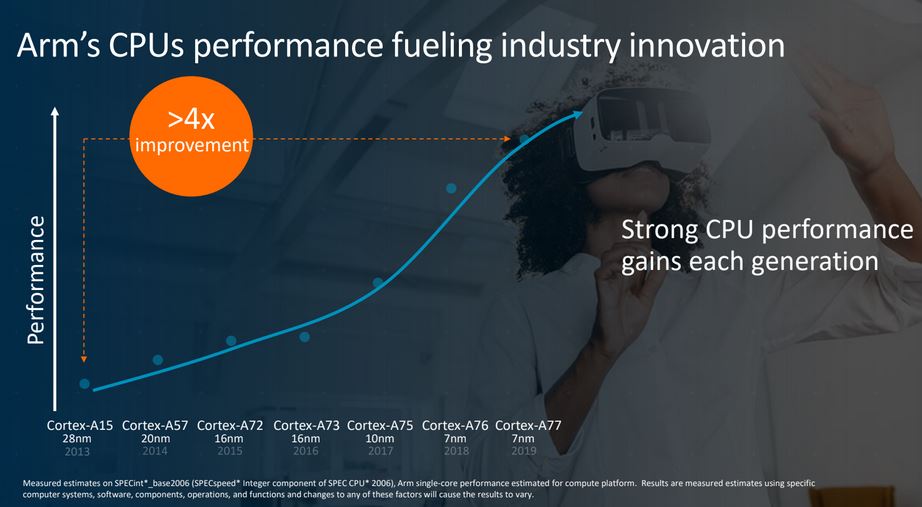Arm Launches New CPU, GPU and Machine Learning IP
Arm announced a set of new chip IP, including a new CPU core design called Cortex-A77, a new GPU design based on the all-new Valhall architecture and a new machine learning (ML) processor.
Arm Cortex-A77 Is Cortex-A76’s Successor
Arm’s new Cortex-A77 is a direct successor to the Cortex-A76 chip that’s shipping this year in some of the high-end devices. Cortex-A76 showed impressive performance and efficiency and Arm said that the Cortex-A77 will build on that efficient microarchitecture, while also boosting the core’s instructions per clock (IPC) by 20%.
The new CPU also boosts ML performance by 25% over its predecessor, Cortex-A76. Cortex-A76 itself received a 7-28x over Arm’s previous cores, primarily because the new core also received support for specific machine learning instructions that can deliver much higher inference performance.
Arm previously claimed that the Cortex-A76 offered PC-class performance and Qualcomm claimed, similarly, that its Snapdragon 8cx platform based on Cortex-A76 can compete with Intel’s mainstream Core i5 CPUs in performance, while using much less power than the Intel chip. According to Arm, the new 7nm Cortex-A77 core has 4 times the performance of the 28nm Cortex-A15 from 2013.
New Mali-G77 GPU, ML Processor
Arm also announced a new Mali-G77 GPU, based on the Valhall architecture about which Arm hasn’t revealed too much yet. However, the company stated that the new Mali-G77 offers up to 1.4x the performance of the previous Mali-G76 GPU through both architectural and process improvements.
The company is now also offering a second-generation ML processor design that is twice as efficient as the original. The peak performance has improved slightly from 4.6 trillion operations per second (TOP/s) to 5 TOP/s, but that performance only requires 1W as opposed to 2W for the original ML processor.
The new ML processor can also improve memory compression techniques by three times compared to the previous generation, and it can scale up to eight cores, for a total performance of 32 TOP/s. However, such designs are unlikely to make it into mobile devices due to the much higher power requirements.
Get Tom's Hardware's best news and in-depth reviews, straight to your inbox.
Arm’s Total Computing Approach
Earlier this month, Arm also announced a new display processor called Mali-D77, which should enable smaller and lighter virtual reality headsets, while also powering any type of device with a display with high-efficiency.
Arm seems to believe in a “total computing approach,” which is why it’s now trying to offer design IP for all sorts of computing platforms to its customers. The company is in a race to dominate many emerging markets that need powerful yet high-efficiency embedded chips, while also trying to win market share from Intel and AMD on the desktop and server markets.
It’s also trying to as stave off the open source RISC-V threat coming from behind. Some large companies have already committed to adopting RISC-V chips to Arm’s detriment, while others may be forced to drop the Arm instruction set architecture in favor of the more open RISC-V due to all the recent trade conflicts.
Lucian Armasu is a Contributing Writer for Tom's Hardware US. He covers software news and the issues surrounding privacy and security.

